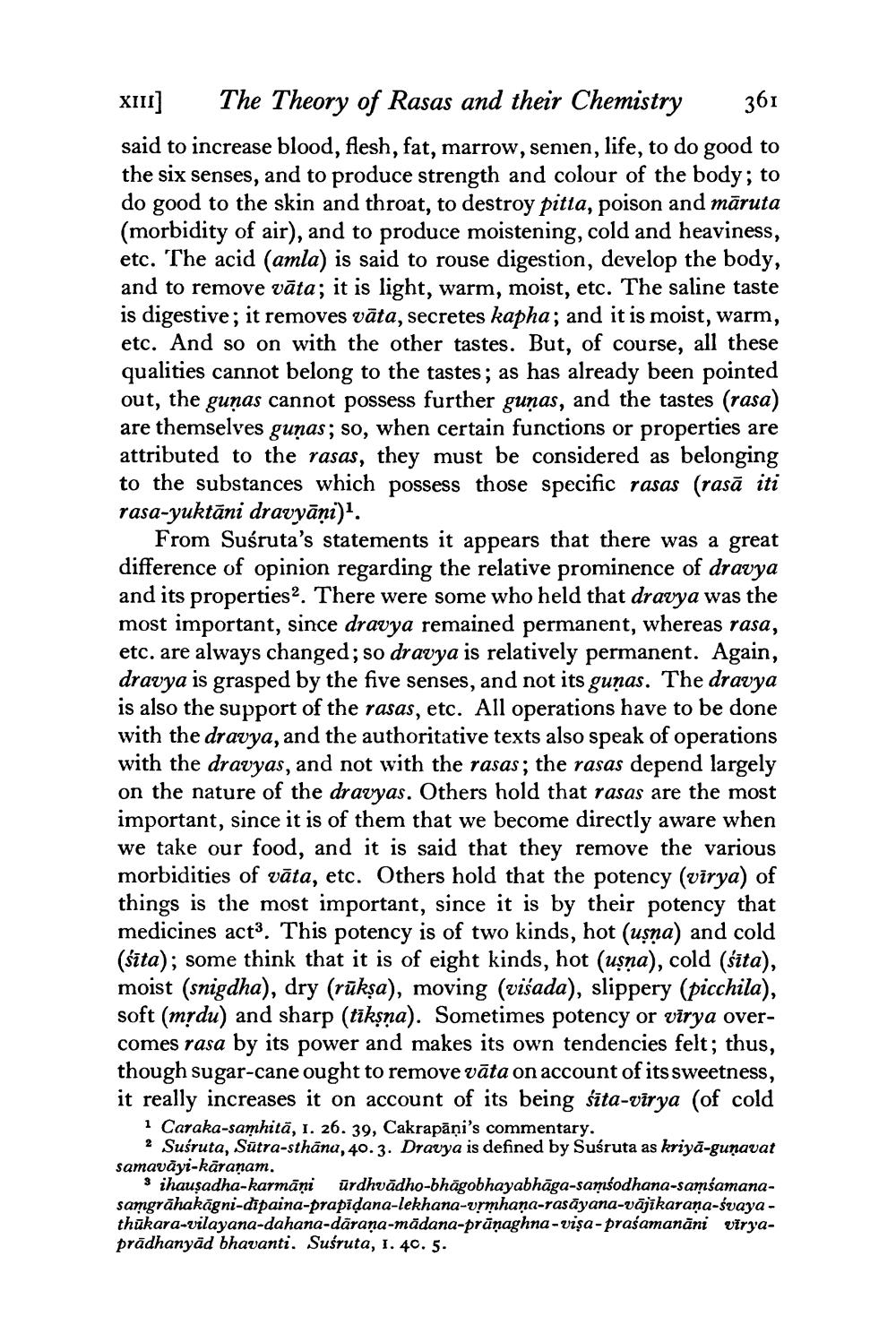________________
XIII] The Theory of Rasas and their Chemistry 361 said to increase blood, flesh, fat, marrow, semen, life, to do good to the six senses, and to produce strength and colour of the body; to do good to the skin and throat, to destroy pitta, poison and māruta (morbidity of air), and to produce moistening, cold and heaviness, etc. The acid (amla) is said to rouse digestion, develop the body, and to remove vāta; it is light, warm, moist, etc. The saline taste is digestive; it removes vāta, secretes kapha; and it is moist, warm, etc. And so on with the other tastes. But, of course, all these qualities cannot belong to the tastes; as has already been pointed out, the gunas cannot possess further guņas, and the tastes (rasa) are themselves gunas; so, when certain functions or properties are attributed to the rasas, they must be considered as belonging to the substances which possess those specific rasas (rasā iti rasa-yuktāni dravyāņi).
From Suśruta's statements it appears that there was a great difference of opinion regarding the relative prominence of dravya and its properties. There were some who held that dravya was the most important, since dravya remained permanent, whereas rasa, etc. are always changed; so dravya is relatively permanent. Again, dravya is grasped by the five senses, and not its guņas. The dravya is also the support of the rasas, etc. All operations have to be done with the dravya, and the authoritative texts also speak of operations with the dravyas, and not with the rasas; the rasas depend largely on the nature of the dravyas. Others hold that rasas are the most important, since it is of them that we become directly aware when we take our food, and it is said that they remove the various morbidities of vāta, etc. Others hold that the potency (vīrya) of things is the most important, since it is by their potency that medicines act3. This potency is of two kinds, hot (uşna) and cold (śīta); some think that it is of eight kinds, hot (uşņa), cold (śīta), moist (snigdha), dry (rūkņa), moving (visada), slippery (picchila), soft (mrdu) and sharp (tīkşņa). Sometimes potency or vīrya overcomes rasa by its power and makes its own tendencies felt; thus, though sugar-cane ought to remove vāta on account of its sweetness, it really increases it on account of its being rīta-vīrya (of cold
i Caraka-samhitā, 1. 26. 39, Cakrapāņi's commentary.
2 Suśruta, Sūtra-sthāna, 40.3. Dravya is defined by Suśruta as kriya-gunavat samaväyi-karanam.
ihausadha-karmāņi ürdhvādho-bhāgobhayabhāga-samsodhana-samsamanasamgrāhakāgni-dīpaina-prapidana-lekhana-vrmhana-rasāyana-vājikarana-śvaya - thūkara-vilayana-dahana-dārana-mādana-prānaghna - vişa-prasamanāni viryaprādhanyäd bhavanti. Susruta, I. 40. 5.




